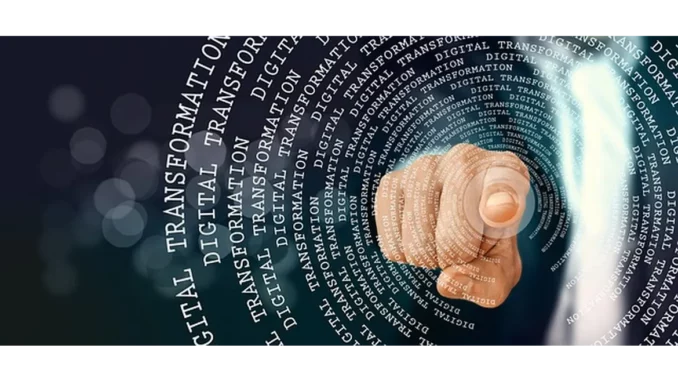
Summary
Digital Transformation of IT Departments: Key Trends for 2025
As 2025 approaches, IT departments are navigating a rapidly evolving digital landscape, significantly transforming business operations and reshaping IT roles. Key trends include the rise of Artificial Intelligence Operations (AIOps), advancements in cybersecurity, bridging the IT skills gap, and the operationalisation of generative AI. Industry observers stress the necessity for IT departments to be agile and strategic in leveraging these trends effectively. “The landscape is shifting quickly, and organisations must adapt or risk being left behind,” comments Adam Thompson, a leading industry analyst.
Main Article
Emergence of AIOps as a Cornerstone
Artificial Intelligence Operations (AIOps) is poised to become a foundational element of IT operations by 2025, automating routine tasks and enhancing resource allocation. This shift towards AIOps will enable real-time resource optimisation and predictive incident management. IT departments are expected to integrate various infrastructure components to create self-service AI platforms, empowering employees to focus on innovation and strategic objectives. The adoption of AIOps will necessitate a proactive approach in embracing AI technologies and fostering an environment conducive to continuous learning and adaptation.
Cybersecurity: A Strategic Imperative
With the proliferation of remote work and cloud-based systems, cybersecurity continues to be a critical function. The expanding attack surface demands robust security measures, compelling IT teams to implement zero-trust architectures and comprehensive security protocols. This strategy involves safeguarding networks, managing access, and cultivating a security-conscious culture across organisations. According to industry commentator Sarah Collins, “Cybersecurity isn’t just an IT issue; it’s a business imperative that requires cross-departmental collaboration and prioritisation of investments.”
Addressing the IT Skills Gap
The growing demand for expertise in AI, cybersecurity, and cloud technologies starkly contrasts with the current shortage of skilled IT professionals. To address this skills gap, IT departments are increasingly focusing on upskilling and reskilling initiatives. By leveraging low-code and no-code platforms, non-specialists can contribute to digital transformation efforts. Partnerships with educational institutions and offering vocational training are identified as key strategies for building a workforce equipped for the future. IT leaders are urged to champion a culture of continuous learning and innovation to maintain a competitive advantage.
Harnessing Generative AI for Operational Efficiency
Generative AI is set to significantly influence IT operations by automating technical tasks such as summarising activity logs and generating compliance reports. This technology will streamline operations, allowing IT professionals to concentrate on strategic initiatives requiring human expertise. The integration of generative AI demands investments in AI technologies and the development of frameworks that ensure ethical AI usage and data privacy compliance. The shift towards generative AI represents a broader trend of automation within IT departments, enhancing efficiency and operational effectiveness.
Evolving Cloud Architectures
As hybrid cloud environments become more prevalent, organisations are seeking to balance the advantages of private, public, and on-premises cloud solutions. IT departments are tasked with developing strategies for managing these complex environments effectively, utilising AI-powered tools for dynamic workload management. This evolution necessitates a comprehensive understanding of cloud technologies, with a strong emphasis on security and compliance automation. IT leaders are prioritising cloud investments and establishing governance frameworks to ensure seamless integration and operation.
Detailed Analysis
The rapid evolution of IT departments reflects broader trends in digital transformation, highlighting the increasing importance of technology in achieving business objectives. The adoption of AIOps underscores a shift towards automation and efficiency, enabling organisations to respond quickly to changing market conditions. Meanwhile, cybersecurity’s elevated status reflects the growing complexity of the digital environment and the necessity for robust protection against sophisticated threats. The focus on bridging the IT skills gap is indicative of the broader challenges faced by industries in acquiring and retaining talent in a rapidly shifting technological landscape. Generative AI’s role in operational efficiency aligns with the ongoing trend of leveraging AI to enhance strategic capabilities and optimize resource management. The evolution of cloud architectures signifies the move towards more flexible and efficient IT solutions, catering to the diverse needs of modern businesses.
Further Development
As these trends continue to unfold, IT departments will need to remain agile and responsive to emerging technologies and challenges. The integration of AIOps and generative AI will likely accelerate, driving further innovation in operational processes. Cybersecurity strategies will evolve in response to new threats, with an increasing focus on cross-departmental collaboration and investment in advanced security measures. Efforts to bridge the IT skills gap will intensify, with organisations exploring new avenues for talent development and acquisition. The evolution of cloud architectures will see continued investment in hybrid solutions, emphasising the need for robust governance and strategic planning. Readers are encouraged to stay engaged with ongoing coverage as these developments shape the future of IT departments and the broader digital landscape.

